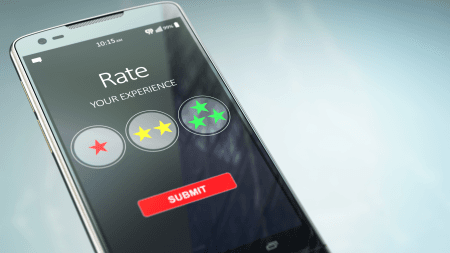
Customer Experience research is one of the most common research requirements amongst b2b organisations according to our recent study of decision makers. However, research suggests that just 4% of companies have customer experience programmes embedded within their organisations.
Many companies state tracking customer satisfaction or experience is important, some of these will go on and embark upon tracking the customer experience over time and a handful will ensure that customer satisfaction trackers become fully embedded within organisations.
After working with a variety of clients over a number of years to keep their customer experience programmes at the forefront of everyone’s minds, here are five top tips on keeping regular customer satisfaction research engaging and interesting for everyone (including your research partner!).
-
Guest questions
Each wave of the research, whether it is quarterly or annually allow a small number of ‘guest’ questions. These questions, which can be either open or preferably closed, can be useful to understand views towards pertinent industry topics, used to gather feedback on recent changes to products or services or to continue to understand the challenges that customers are facing. This also allows the results presentation to cover some new and different topics.
-
Track performance, with a timescale
Many trackers will include key metrics such as the Net Promoter Score (NPS), Overall Satisfaction and Ease of Doing Business for example which are often useful to see if experience has changed at an overall level. Also consider including a question around whether the customer has seen improvements in the past 12 months, this can be split into the overall service provided or more granular looking at certain business units.
-
Bring the findings to life
After a few waves of tracking research, the same presentation is often used as a template, key stakeholders are used to the format and the way data is displayed. This however is not always an engaging basis for a presentation. Including media such as voxpop videos, audios and at the very least verbatim quotes allows the findings and voice of the customer to be brought to life.
-
Get to know your customers
Profiling meaningful groups of your customers such as promoters, passives or detractors can be useful to understand the characteristics of each group. Customer profiles can look into whether certain types of organisations are more likely to fall into one category or another or whether a customer service segmentation is impacting upon the results in a positive or negative way. Customer profiles can then be turned into infographics to keep the results in the mind of stakeholders and the wider organisation after the research is complete.
-
Keep it succint
Remember that tracking projects are fundamentally there to track the customer experience and not to be a long and tedious omnibus study. By trying to include everything in a tracker it is inevitable that questions will not be fully answered. Aside from a small number of guest questions, where possible the questions asked over time should remain consistent.


